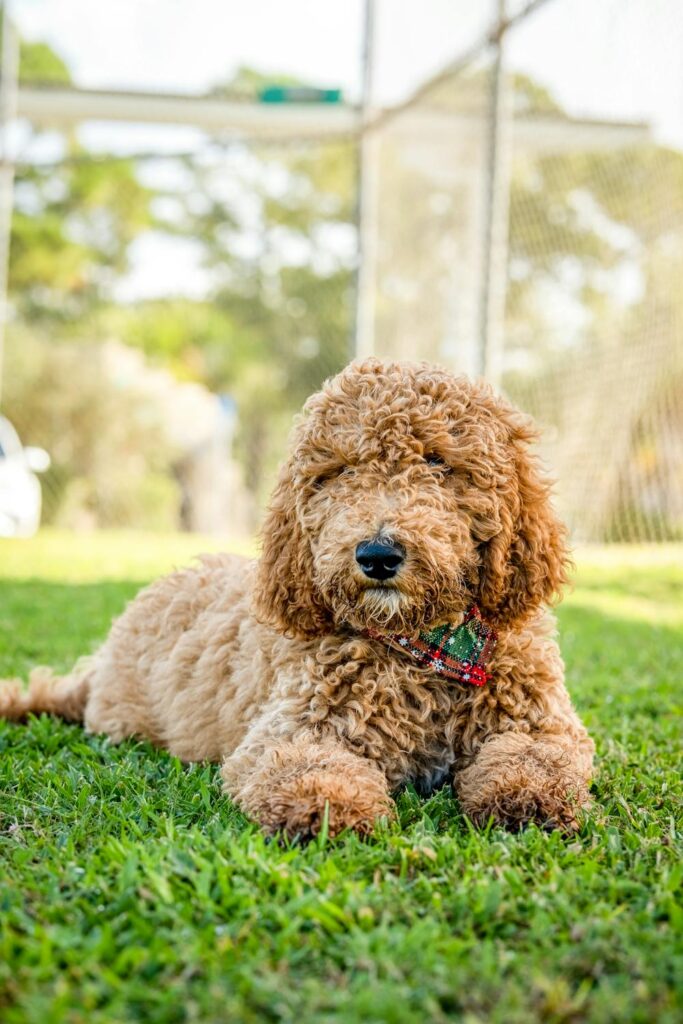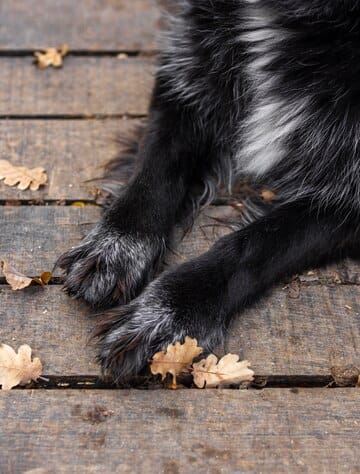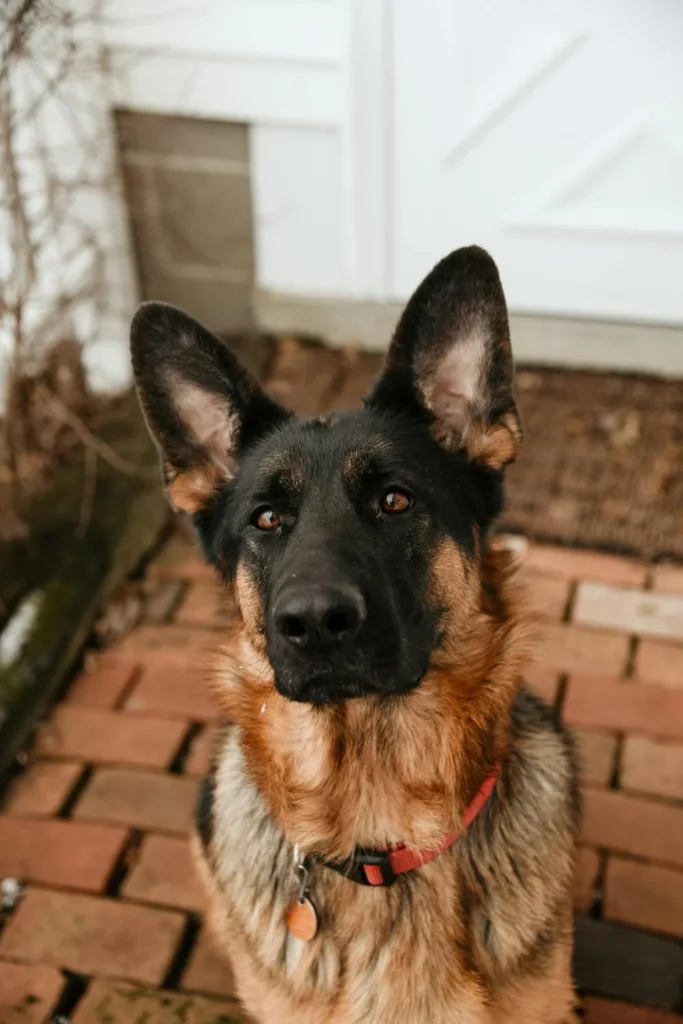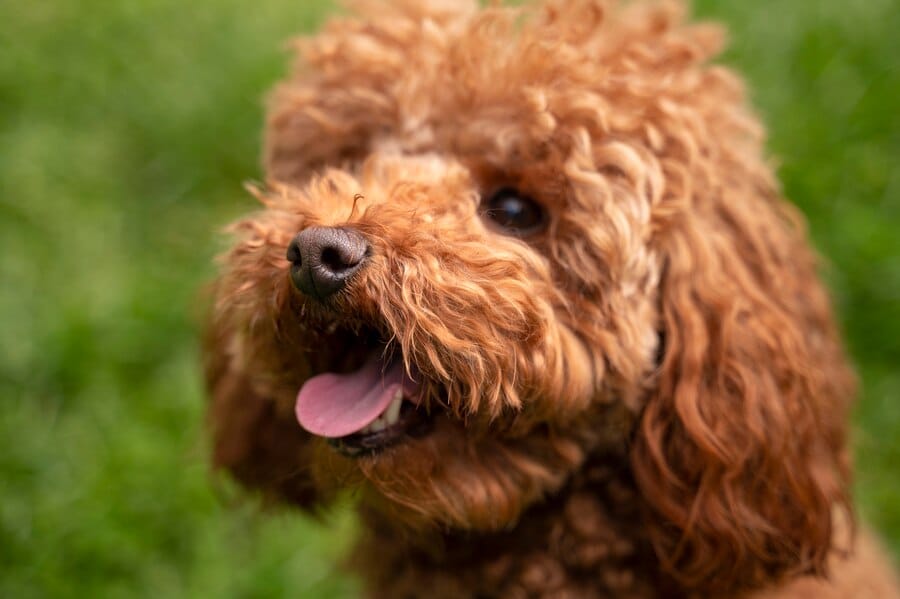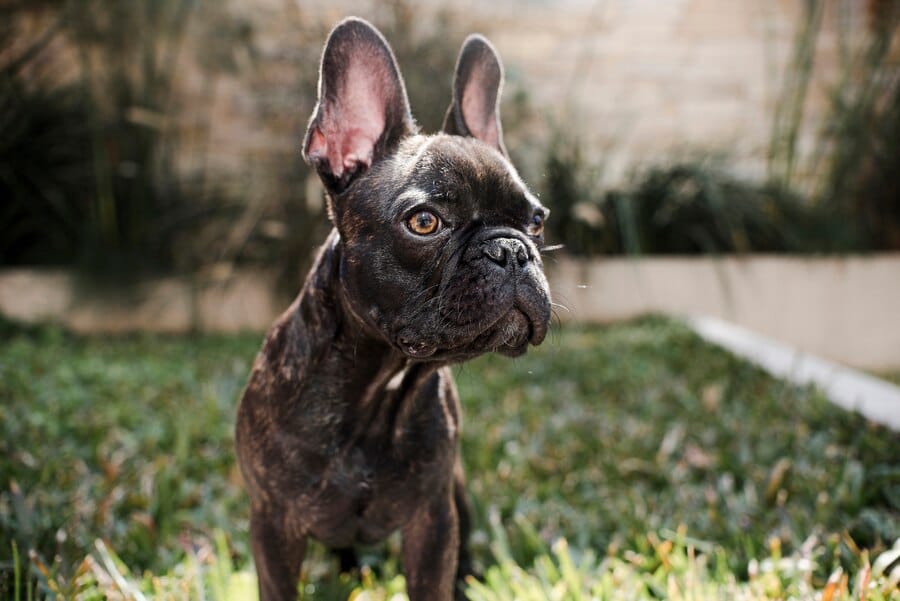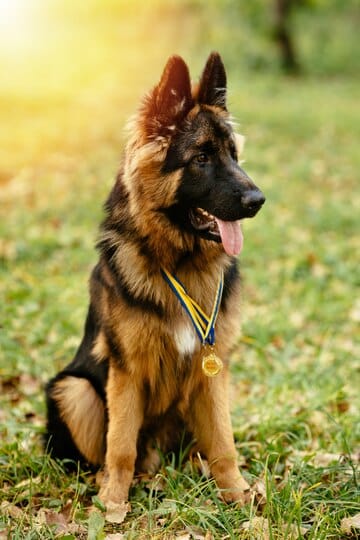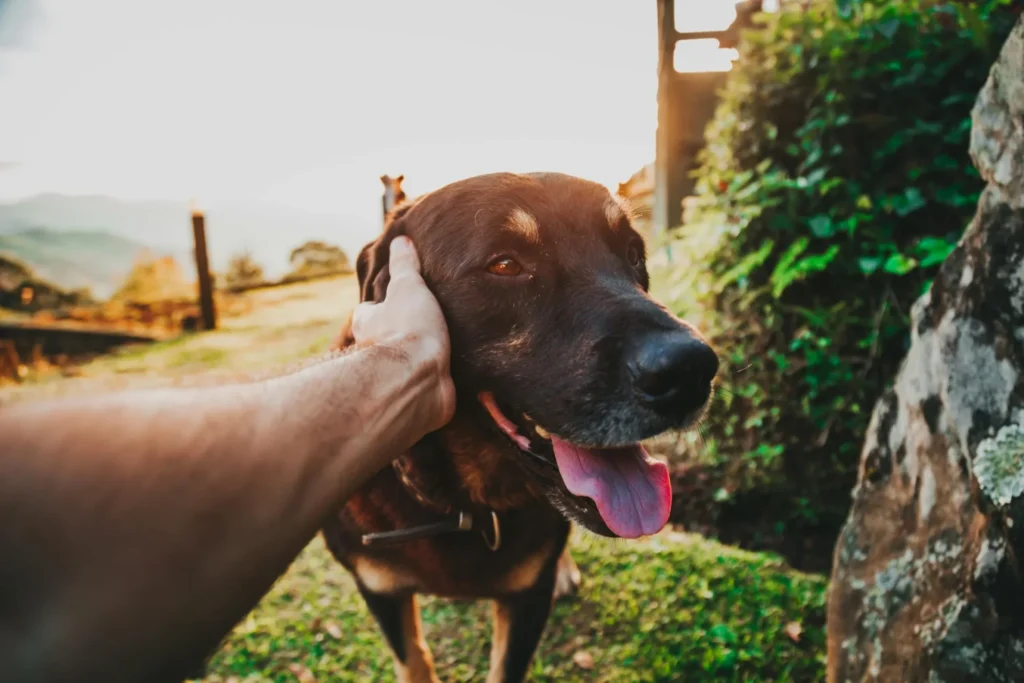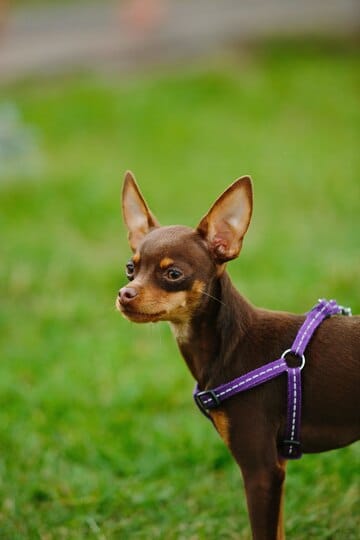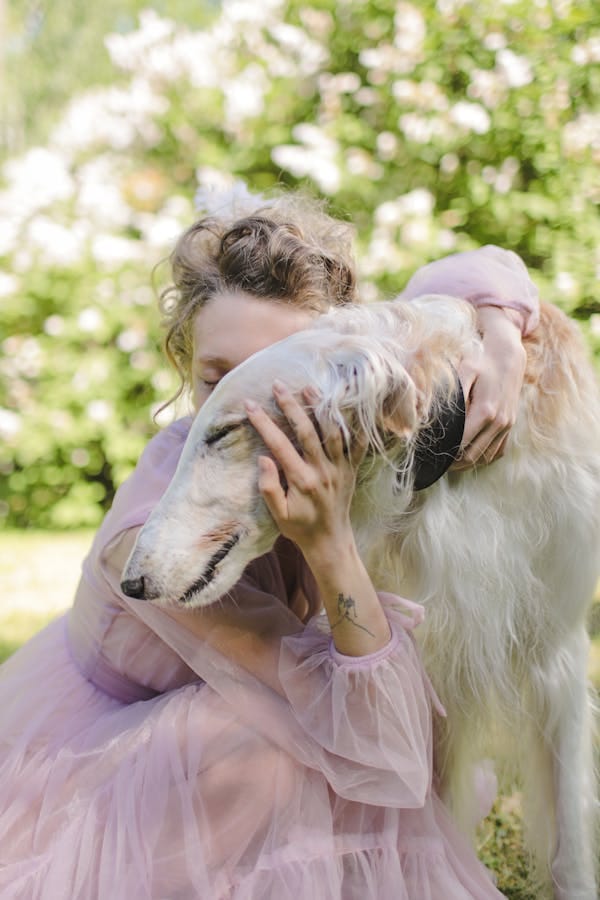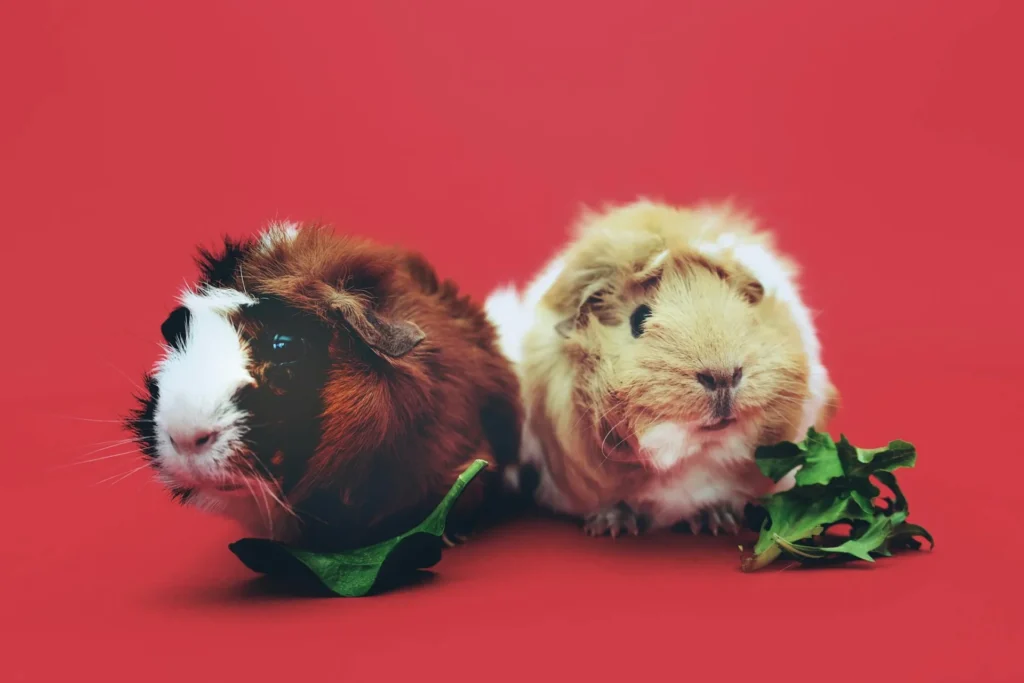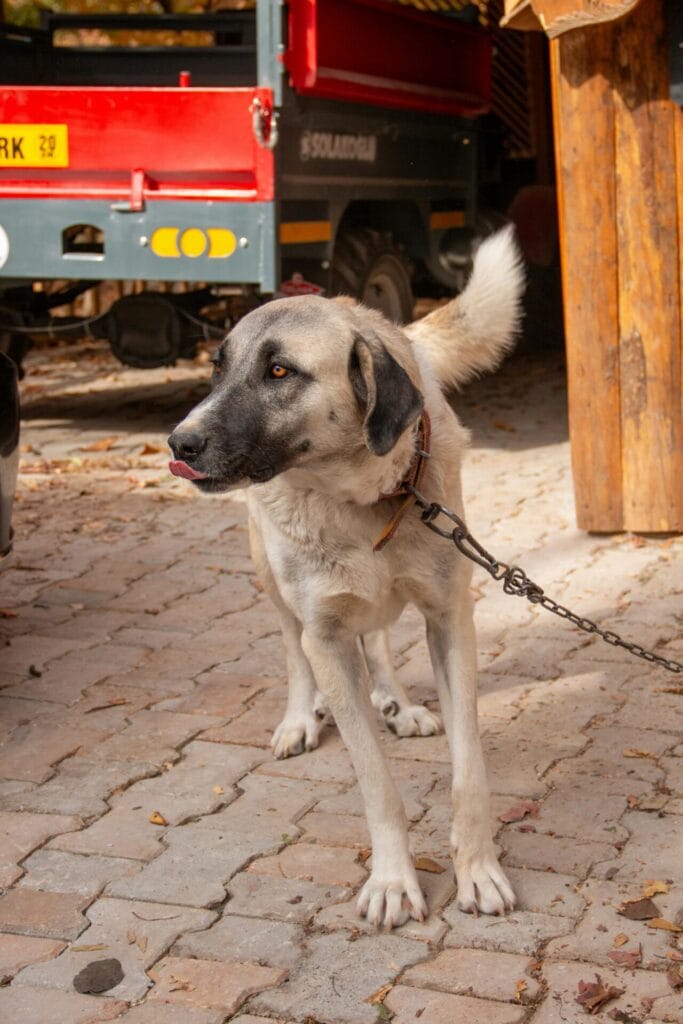- Introduction to the Chiweagle
- Origin and History
- Physical Characteristics
- Temperament and Personality
- Training and Socialization
- Exercise and Activity Needs
- Grooming and Care
- Health Concerns and Lifespan
- Nutrition and Diet
- Living with a Chiweagle
- Choosing a Chiweagle
- Adoption and Rescue
- Benefits of Adoption
- Where to Find Chiweagles for Adoption
- The Adoption Process
- Questions to Ask the Rescue
- Preparing for Your Adopted Chiweagle
- Transitioning Your Adopted Chiweagle
- Common Challenges with Adopted Dogs
- Success Stories
- Adoption vs. Buying from a Breeder
- Supporting Rescue Organizations
- Post-Adoption Support
- Adoption Day Checklist
- Breeding Considerations
Introduction to the Chiweagle
Welcome to the wonderful world of Chiweagles! 🎉 If you’re reading this, you’re about to embark on a journey to discover one of the most charming and unique hybrid dog breeds out there. The Chiweagle, a delightful mix between a Chihuahua and a Beagle, combines the best of both worlds to create a lovable companion that’s sure to steal your heart.
But what exactly is a Chiweagle? Let’s break it down:
- Chi = Chihuahua 🇲🇽
- weagle = Beagle 🐾
This hybrid breed, also known as a Cheagle, brings together the sassy personality of the Chihuahua with the friendly nature of the Beagle. The result? A small to medium-sized dog with a big heart and an even bigger personality!
Whether you’re a potential Chiweagle owner, a current parent to this adorable mix, or just a curious dog lover, this comprehensive guide will take you through everything you need to know about the Chiweagle. From their origins to their care needs, and from training tips to health considerations, we’ve got you covered.
So, grab a cup of coffee ☕, get comfy, and let’s dive into the fascinating world of Chiweagles!
Origin and History
The Chiweagle, like many designer dog breeds, doesn’t have a long documented history. To understand this hybrid, we need to look at the rich histories of its parent breeds: the Chihuahua and the Beagle.
Chihuahua History 🇲🇽
The Chihuahua, named after the Mexican state of Chihuahua, is one of the oldest breeds in the Americas. Their history is a bit mysterious, but here are some key points:
- Ancient origins: Some believe they descended from the Techichi, a companion dog favored by the Toltec civilization in Mexico as far back as the 9th century CE.
- Aztec connection: The Aztecs refined the breed after conquering the Toltecs in the 12th century.
- Modern discovery: They were found in the 1850s in the Mexican state of Chihuahua.
- AKC recognition: The American Kennel Club recognized the breed in 1904.
Beagle History 🐾
The Beagle’s history is equally fascinating:
- Ancient roots: Beagle-like dogs have existed since ancient Greece.
- English refinement: The modern Beagle was developed in Great Britain around the 1830s.
- Hunting heritage: Bred for hunting rabbits and hares in packs.
- AKC recognition: Recognized by the AKC in 1885.
The Birth of the Chiweagle
The exact origin of the Chiweagle is unclear, but it’s likely that this mix first appeared in the late 20th or early 21st century when designer dogs became popular. The goal was to combine the Chihuahua’s compact size and feisty personality with the Beagle’s friendly nature and keen sense of smell.
While not recognized as a purebred dog by major kennel clubs, the Chiweagle has gained a following for its unique blend of characteristics. Let’s explore a timeline of events that might have influenced the Chiweagle’s development:
| Year | Event |
|---|---|
| 1904 | Chihuahua recognized by AKC |
| 1885 | Beagle recognized by AKC |
| 1980s-1990s | Designer dog trend begins |
| Early 2000s | Likely period when Chiweagles first appeared |
| 2010s | Growing popularity of hybrid breeds, including Chiweagles |
As we continue to explore the Chiweagle, remember that each one is unique, inheriting a mix of traits from both parent breeds. This unpredictability is part of what makes hybrid dogs so special and beloved by many dog enthusiasts. 🐾💖
Physical Characteristics
One of the most charming aspects of the Chiweagle is its adorable appearance. Let’s dive into the physical traits that make this hybrid so irresistible! 😍
Size
Chiweagles are typically small to medium-sized dogs, but their size can vary depending on which parent breed they take after more.
- Height: Generally between 9 to 14 inches (23 to 36 cm) at the shoulder
- Weight: Usually between 10 to 30 pounds (4.5 to 13.6 kg)
Remember, these are averages, and individual Chiweagles may fall outside these ranges.
Body Structure
The body of a Chiweagle is often a unique blend of its parent breeds:
- Body: Compact and sturdy, often more muscular than a purebred Chihuahua
- Legs: Usually longer than a Chihuahua’s but shorter than a Beagle’s
- Tail: Can be long and curved like a Beagle’s or short and upright like a Chihuahua’s
Head and Face
The Chiweagle’s face is where you’ll often see the most obvious mix of its parent breeds:
- Head: Rounded, but not as pronounced as a Chihuahua’s “apple head”
- Ears: Can be erect like a Chihuahua’s or floppy like a Beagle’s (or even one of each!)
- Eyes: Large and expressive, often dark in color
- Muzzle: Usually longer than a Chihuahua’s but shorter than a Beagle’s
Coat and Colors
The coat of a Chiweagle can vary widely, inheriting characteristics from both parent breeds:
- Texture: Can be short and smooth like a Chihuahua, or slightly longer and denser like a Beagle
- Colors: A wide range is possible, including:
- Black
- Brown
- White
- Tan
- Cream
- Combinations of these colors
Some Chiweagles may have the classic tri-color pattern of a Beagle, while others might have the solid or bi-color patterns more common in Chihuahuas.
Comparison Table: Chiweagle vs. Parent Breeds
To give you a better idea of how Chiweagles compare to their parent breeds, here’s a handy comparison table:
| Characteristic | Chiweagle | Chihuahua | Beagle |
|---|---|---|---|
| Height | 9-14 inches | 5-8 inches | 13-15 inches |
| Weight | 10-30 pounds | 3-6 pounds | 20-30 pounds |
| Coat | Short to medium | Short or long | Short |
| Ears | Erect or floppy | Erect | Floppy |
| Tail | Varied | Upright | Long, curved |
| Colors | Varied | Many | Tri-color or bi-color |
Remember, due to the nature of hybrid breeds, individual Chiweagles can vary greatly in their physical characteristics. Some may look more like Chihuahuas, others more like Beagles, and many will be a perfect blend of both! 🐶💕
This unpredictability is part of what makes Chiweagles so special and unique. Each one is truly one-of-a-kind!
Temperament and Personality
When it comes to personality, Chiweagles are like a box of chocolates – you never know exactly what you’re going to get! 🍫 But that’s part of their charm. These little dogs often inherit a delightful mix of traits from their Chihuahua and Beagle parents, resulting in a personality that’s as unique as their appearance.
Key Personality Traits
- Affectionate 💖: Chiweagles often form strong bonds with their owners and love to cuddle.
- Energetic 🏃♂️: They inherit the playful nature of both parent breeds and enjoy a good romp.
- Intelligent 🧠: With the Beagle’s nose and the Chihuahua’s quick wit, Chiweagles are often quite smart.
- Curious 🕵️♀️: The Beagle’s hunting instincts often manifest as a strong sense of curiosity in Chiweagles.
- Alert 🚨: Like Chihuahuas, they can make excellent watchdogs, often alerting their owners to any unusual activity.
- Social 👥: Many Chiweagles enjoy the company of people and other dogs, though early socialization is key.
Behavioral Tendencies
While every Chiweagle is unique, here are some common behavioral tendencies you might observe:
- Barking: Chiweagles can be vocal, inheriting the Chihuahua’s tendency to bark and the Beagle’s howl.
- Stubbornness: Both parent breeds can be stubborn, so don’t be surprised if your Chiweagle has a mind of its own sometimes.
- Scent-driven: Thanks to their Beagle heritage, many Chiweagles have a strong nose and may be easily distracted by interesting smells.
- Protective: They often inherit the Chihuahua’s loyalty and may be protective of their family.
- Playful: Chiweagles typically maintain a puppy-like playfulness well into adulthood.
Emotional Needs
Chiweagles, like all dogs, have emotional needs that should be met for their well-being:
- Companionship: They thrive on human interaction and may suffer from separation anxiety if left alone for long periods.
- Mental Stimulation: Their intelligent nature means they need mental challenges to stay happy and well-behaved.
- Physical Exercise: Regular play and walks help meet their energy needs and prevent boredom-related behaviors.
- Consistency: Clear rules and consistent training help them feel secure and understand their place in the family.
- Positive Reinforcement: They respond well to praise and rewards, which help build their confidence.
Compatibility
Chiweagles can adapt to various living situations, but they’re particularly well-suited for:
- Families with older children
- Single owners who can devote time and attention to them
- Apartment living (with proper exercise)
- Homes with securely fenced yards
They may not be the best fit for:
- Families with very young children (due to their small size and potential for nipping)
- Homes with many other pets (unless well-socialized)
- Owners who are away from home for long periods
Personality Comparison
To give you a better idea of how a Chiweagle’s personality might compare to its parent breeds, here’s a quick comparison chart:
| Trait | Chiweagle | Chihuahua | Beagle |
|---|---|---|---|
| Affection Level | High | High | High |
| Energy Level | Medium-High | Medium | High |
| Intelligence | High | High | High |
| Trainability | Medium | Medium | Medium |
| Watchdog Ability | High | High | Medium |
| Barking Tendency | Medium-High | High | Medium |
| Sociability | Medium-High | Medium | High |
Remember, these are generalizations, and individual dogs may vary. The joy of adopting a Chiweagle is discovering their unique personality quirks and falling in love with their individual character! 🐾💕
Training and Socialization
Training and socializing your Chiweagle is crucial for raising a well-behaved and happy dog. While these pups can inherit the intelligence of both parent breeds, they may also pick up some stubborn tendencies. Don’t worry, though – with patience, consistency, and positive reinforcement, you can help your Chiweagle become a well-mannered companion! 🎓🐶
Starting Early
The key to successful training is to start as early as possible. Puppies are like little sponges, ready to soak up information and experiences:
- Begin basic training as soon as you bring your Chiweagle home.
- Expose them to various people, animals, and environments in a positive way.
- Enroll in puppy kindergarten classes for structured socialization and learning.
Basic Commands
Focus on these essential commands first:
- Sit 🪑
- Stay 🚷
- Come 🏃♂️
- Down ⬇️
- Leave it 🚫
Use positive reinforcement techniques like treats, praise, and play to reward good behavior. Chiweagles, like their parent breeds, often respond well to food rewards.
Potty Training
Potty training can be a challenge with small breeds, but consistency is key:
- Establish a routine for meals and potty breaks.
- Take your Chiweagle out frequently, especially after meals, naps, and play sessions.
- Use positive reinforcement when they go in the right place.
- Be patient – it may take a little longer for small breeds to fully grasp potty training.
Leash Training
Given their Beagle heritage, Chiweagles may have a strong urge to follow their nose:
- Start with short, positive leash experiences in a low-distraction environment.
- Use treats to encourage walking beside you.
- Be patient and consistent – it may take time for them to learn not to pull.
Socialization
Proper socialization is crucial for developing a well-rounded Chiweagle:
- Expose them to various people, including children, men, and women of different ages.
- Introduce them to other dogs and animals in controlled, positive environments.
- Let them experience different sounds, sights, and textures.
- Make all new experiences positive with treats and praise.
Addressing Common Behavioral Issues
Chiweagles may be prone to certain behavioral issues. Here’s how to address them:
| Issue | Cause | Solution |
|---|---|---|
| Excessive Barking | Alert nature, boredom | Teach “quiet” command, provide mental stimulation |
| Separation Anxiety | Strong attachment to owners | Gradual alone training, interactive toys |
| Stubbornness | Independent nature | Consistent training, positive reinforcement |
| Chasing Small Animals | Hunting instinct | Strong recall training, supervised outdoor time |
| Nipping | Playfulness or fear | Teach bite inhibition, provide appropriate chew toys |
Advanced Training
Once your Chiweagle has mastered the basics, you can move on to more advanced training:
- Agility training 🏃♂️: Great for burning energy and mental stimulation
- Scent work 👃: Taps into their Beagle heritage
- Trick training 🎪: Challenges their mind and strengthens your bond
Training Tips
- Keep sessions short: 5-10 minutes several times a day is better than one long session.
- Be consistent: Use the same commands and rewards each time.
- Stay positive: Never use harsh punishments, which can damage your relationship.
- Be patient: Every dog learns at their own pace.
- Make it fun: The more enjoyable training is, the more your Chiweagle will want to participate.
Remember, training is an ongoing process. Even after your Chiwea
gle has mastered the basics, continue to reinforce good behavior and challenge their mind with new tricks and activities. This ongoing engagement will help keep your furry friend happy, well-behaved, and mentally sharp throughout their life. 🧠🐾
Exercise and Activity Needs
Chiweagles may be small, but they’ve got energy to spare! 🏃♂️💨 These lively little pups inherit the playful nature of both the Chihuahua and the Beagle, resulting in a dog that needs regular exercise to stay healthy and happy. Let’s dive into their activity needs and how to meet them.
Daily Exercise Requirements
On average, a Chiweagle needs about 30-60 minutes of exercise per day. This can be broken down into:
- 1-2 walks (15-30 minutes each)
- Playtime in a securely fenced yard
- Indoor games and activities
Remember, individual needs may vary based on age, health, and personality.
Types of Exercise
Variety is the spice of life, and it’s no different for your Chiweagle! Here are some great exercise options:
- Walks 🚶♀️: Great for physical exercise and mental stimulation through sniffing
- Fetch 🎾: Taps into their playful nature
- Tug-of-war 🧵: A fun game that also helps with dental health
- Hide-and-seek 🕵️: Engages their nose and mind
- Agility courses �obstacle: Can be set up in your backyard for a fun challenge
- Swimming 🏊♀️: If they enjoy water (always supervise closely)
Mental Stimulation
Don’t forget about mental exercise! Chiweagles are intelligent dogs that need mental challenges:
- Puzzle toys 🧩
- Training sessions 🎓
- Scent games 👃
- Interactive toys 🦴
Exercise Intensity
Here’s a breakdown of exercise intensity for Chiweagles:
| Intensity | Activities | Duration |
|---|---|---|
| Low | Short walks, gentle play | 15-20 minutes |
| Medium | Longer walks, fetch | 20-30 minutes |
| High | Agility, swimming | 10-15 minutes |
Mix and match these to create a balanced exercise routine.
Age-Appropriate Exercise
Remember to adjust exercise based on your Chiweagle’s age:
- Puppies 🐾: Short, frequent play sessions. Avoid high-impact activities.
- Adults 🐕: Full exercise routine as described above.
- Seniors 👵: Gentler, shorter activities. Focus on mental stimulation.
Weather Considerations
Chiweagles can be sensitive to extreme temperatures:
- In hot weather 🌞: Exercise early morning or late evening. Provide plenty of water and shade.
- In cold weather ❄️: Use a doggy sweater if needed. Keep walks shorter.
Signs of Adequate Exercise
A well-exercised Chiweagle will:
- Be calm and relaxed at home
- Sleep well at night
- Maintain a healthy weight
- Show fewer behavioral problems
Signs of Over-Exercise
Watch for these signs that your Chiweagle might be getting too much exercise:
- Excessive panting
- Lagging behind on walks
- Reluctance to play
- Limping or stiffness
Exercise Safety Tips
- Always supervise outdoor activities
- Use a harness instead of a collar to protect their small necks
- Provide plenty of fresh water
- Check paw pads after walks for any injuries
- In hot weather, test the pavement with your hand – if it’s too hot for you, it’s too hot for your pup!
Remember, a tired Chiweagle is a happy Chiweagle! 😊 Regular exercise not only keeps them physically fit but also helps prevent boredom-related behavioral issues. It’s also a great way to bond with your furry friend and create lasting memories together. 💖🐾
Grooming and Care
Keeping your Chiweagle looking and feeling their best involves regular grooming and care. While they’re generally low-maintenance compared to some breeds, they still need attention to stay healthy and comfortable. Let’s dive into the grooming needs of these adorable pups! 🛁✨
Coat Care
Chiweagles can inherit various coat types from their parent breeds:
- Short and smooth (like a Chihuahua)
- Slightly longer and denser (more Beagle-like)
Regardless of coat type, here’s a general grooming routine:
- Brushing 🧼: 2-3 times a week for short coats, daily for longer coats
- Bathing 🛀: Every 4-6 weeks, or as needed
- Shedding 🦺: Expect moderate shedding, especially during season changes
Bathing Tips
- Use a dog-specific shampoo
- Rinse thoroughly to avoid skin irritation
- Dry completely, especially in skin folds
- Make bath time positive with treats and praise
Nail Care
Keeping your Chiweagle’s nails trimmed is crucial for their comfort and mobility:
- Frequency ✂️: Every 2-4 weeks, or when you hear clicking on hard floors
- Method: Use dog nail clippers or a grinder
- Tip: If unsure, ask a groomer or vet to demonstrate proper technique
Dental Care
Good dental hygiene is essential for your Chiweagle’s overall health:
- Brushing 🦷: Ideally daily, but at least 2-3 times a week
- Dental chews: Offer regularly to help reduce plaque
- Professional cleaning: As recommended by your vet
Ear Care
Chiweagles, especially those with floppy Beagle-like ears, need regular ear checks:
- Inspection 👂: Weekly for signs of redness, swelling, or discharge
- Cleaning: Monthly, or as directed by your vet
- Tip: Never insert anything into the ear canal
Eye Care
Those big, expressive Chiweagle eyes need attention too:
- Cleaning 👁️: Wipe gently around the eyes daily with a damp cloth
- Check: Look for signs of redness, discharge, or cloudiness
Paw Care
Don’t forget about those little paws:
- Inspection: Check regularly for cuts, thorns, or other injuries
- Trimming: Keep the hair between paw pads trimmed
- Moisturizing: Use dog-safe balm on paw pads if they become dry or cracked
Grooming Tools
Here’s a list of essential grooming tools for your Chiweagle:
| Tool | Purpose |
|---|---|
| Bristle brush | For regular coat brushing |
| Dog shampoo | For bathing |
| Nail clippers | For nail trimming |
| Toothbrush and dog toothpaste | For dental care |
| Ear cleaner | For ear maintenance |
| Soft cloth | For eye cleaning |
Grooming Schedule
To help you stay on top of your Chiweagle’s grooming needs, here’s a sample schedule:
| Task | Frequency |
|---|---|
| Brushing | 2-3 times a week |
| Bathing | Every 4-6 weeks |
| Nail trimming | Every 2-4 weeks |
| Teeth brushing | 2-3 times a week |
| Ear cleaning | Monthly |
| Eye cleaning | Daily |
Professional Grooming
While you can handle most grooming at home, consider professional grooming:
- Every 2-3 months for a thorough clean and check
- For nail trimming if you’re not comfortable doing it yourself
- Before special occasions for a extra-spiffy look 🎩✨
Grooming as Bonding Time
Remember, grooming isn’t just about keeping your Chiweagle clean – it’s also a great opportunity for bonding:
- Use positive reinforcement during grooming sessions
- Make it a calm, enjoyable experience
- Use this time to check for any unusual lumps, bumps, or changes in your dog’s body
By maintaining a regular grooming routine, you’re not only keeping your Chiweagle looking their best, but you’re also contributing to their overall health and well-being. Plus, who can resist a freshly groomed, sweet-smelling Chiweagle cuddle? 🤗💖
Health Concerns and Lifespan
Like all dog breeds, Chiweagles can be prone to certain health issues. Being aware of these potential problems can help you provide the best care for your furry friend and catch any issues early. Let’s dive into the health profile of the Chiweagle! 🏥🐾
Lifespan
Chiweagles typically have a lifespan of 10-14 years. With proper care, nutrition, and regular vet check-ups, many can live even longer!
Common Health Issues
While Chiweagles are generally healthy dogs, they can inherit health problems from their parent breeds. Here are some conditions to watch out for:
- Patellar Luxation 🦴: A common issue in small breeds where the kneecap dislocates.
- Eye Problems 👁️: Including progressive retinal atrophy and glaucoma.
- Heart Issues ❤️: Such as mitral valve disease, more common in Chihuahuas.
- Intervertebral Disk Disease 🦴: A back problem that can cause pain and mobility issues.
- Hypothyroidism 🦠: An underactive thyroid gland that can affect metabolism.
- Allergies 🤧: Both food and environmental allergies can be common.
- Dental Problems 🦷: Small breeds are often prone to dental issues.
Health Issue Comparison
Here’s a comparison of health issues in Chiweagles and their parent breeds:
| Health Issue | Chiweagle | Chihuahua | Beagle |
|---|---|---|---|
| Patellar Luxation | Moderate Risk | High Risk | Low Risk |
| Eye Problems | Moderate Risk | High Risk | Moderate Risk |
| Heart Issues | Moderate Risk | High Risk | Low Risk |
| Intervertebral Disk Disease | Moderate Risk | High Risk | Low Risk |
| Hypothyroidism | Low Risk | Low Risk | Moderate Risk |
| Allergies | Moderate Risk | Moderate Risk | High Risk |
| Dental Problems | High Risk | High Risk | Moderate Risk |
Preventive Care
To keep your Chiweagle healthy, consider these preventive measures:
- Regular Vet Check-ups 👨⚕️: At least once a year for adults, more frequently for puppies and seniors.
- Vaccinations 💉: Keep them up to date on core vaccines.
- Parasite Prevention 🐛: Regular treatments for fleas, ticks, and worms.
- Dental Care 🦷: Regular brushing and professional cleanings as needed.
- Weight Management ⚖️: Maintain a healthy weight to prevent obesity-related issues.
- Exercise 🏃♂️: Regular, appropriate exercise to keep them fit.
- Nutrition 🥩: High-quality, balanced diet suitable for their age and size.
- Mental Stimulation 🧠: Keep their mind active to prevent cognitive decline.
Signs of Health Issues
Be alert for these signs that might indicate a health problem:
- Changes in appetite or water consumption
- Lethargy or decreased activity
- Difficulty breathing or excessive panting
- Limping or difficulty moving
- Changes in urination or defecation habits
- Vomiting or diarrhea
- Excessive scratching or licking
- Bad breath or drooling
- Cloudy eyes or squinting
Genetic Testing
Consider genetic testing for your Chiweagle. This can help identify potential inherited health risks and guide preventive care.
Pet Insurance
Given the potential for health issues, pet insurance might be a good investment for Chiweagle owners. It can help manage costs for unexpected health problems.
Caring for a Senior Chiweagle
As your Chiweagle ages, their care needs may change:
- More frequent vet check-ups (every 6 months)
- Adjustments to diet and exercise routine
- Increased attention to dental care
- Possible need for supplements (as advised by your vet)
- Accommodations for mobility issues (e.g., ramps, orthopedic beds)
Emergency Preparedness
Always be prepared for potential health emergencies:
- Keep your vet’s contact information easily accessible
- Know the location of the nearest 24-hour emergency vet clinic
- Consider taking a pet first aid course
Remember, while this information is helpful, it’s not a substitute for professional veterinary advice. Always consult with your veterinarian for the best care plan for your individual Chiweagle. With proper care and attention, your Chiweagle can live a long, healthy, and happy life! 🌈🐶💖
Nutrition and Diet
Providing your Chiweagle with a balanced, nutritious diet is crucial for their overall health, energy levels, and longevity. Let’s explore the dietary needs of these adorable hybrids and how to keep them healthy from the inside out! 🍽️🐶
Caloric Needs
Chiweagles are small to medium-sized dogs with moderate energy levels. Their caloric needs can vary based on factors like:
- Age
- Weight
- Activity level
- Metabolism
On average, an adult Chiweagle might need anywhere from 300 to 600 calories per day. However, always consult with your vet for personalized advice.
Macronutrient Balance
A balanced diet for a Chiweagle should typically include:
- Protein 🥩: 18-25% for adults, 22-28% for puppies
- Fat 🥓: 10-15% for adults, 8-12% for puppies
- Carbohydrates 🌾: The remaining percentage, focusing on complex carbs
Feeding Schedule
Establish a consistent feeding schedule:
- Puppies (under 6 months): 3-4 small meals per day
- Adults: 2 meals per day
- Seniors: 2-3 smaller meals per day
Types of Dog Food
There are several options for feeding your Chiweagle:
- Commercial Dry Food (Kibble) 🥣
- Pros: Convenient, helps clean teeth
- Cons: May contain fillers, less palatable for some dogs
- Wet Food 🥫
- Pros: High moisture content, often more palatable
- Cons: More expensive, doesn’t help clean teeth
- Semi-Moist Food 🍖
- Pros: Convenient, more palatable than dry food
- Cons: Often high in sugar and preservatives
- Home-Cooked Meals 👨🍳
- Pros: Control over ingredients, can cater to specific needs
- Cons: Time-consuming, risk of nutritional imbalance if not properly formulated
- Raw Diet 🥩
- Pros: Natural, can improve coat and dental health
- Cons: Risk of bacterial contamination, needs careful balancing
Choosing the Right Food
When selecting food for your Chiweagle, consider:
- Age-appropriate formulas (puppy, adult, senior)
- Size-appropriate kibble (small breed formulas)
- Quality of ingredients (look for named meat sources)
- Absence of artificial preservatives, colors, and flavors
- AAFCO (Association of American Feed Control Officials) approval
Foods to Avoid
Some human foods can be harmful or even toxic to Chiweagles. Always avoid:
- Chocolate 🍫
- Grapes and raisins 🍇
- Onions and garlic 🧅
- Xylitol (artificial sweetener)
- Alcohol 🍷
- Caffeine ☕
- Macadamia nuts 🥜
- Raw or undercooked meat, eggs, or bones
Treats and Snacks
Treats should make up no more than 10% of your Chiweagle’s daily caloric intake. Some healthy options include:
- Small pieces of lean meat
- Carrot sticks
- Apple slices (without seeds) 🍎
- Blueberries 🫐
- Commercial dog treats (in moderation)
Remember to adjust their main meals accordingly when giving treats.
Hydration
Always provide fresh, clean water for your Chiweagle. 💧 Some tips:
- Change water daily
- Clean water bowl regularly
- Consider a water fountain to encourage drinking
- Monitor water intake – changes can indicate health issues
Special Dietary Considerations
Some Chiweagles may have specific dietary needs:
- Weight Management: If your Chiweagle tends to gain weight easily, opt for lower-calorie foods and increase exercise.
- Allergies: Some may inherit food sensitivities. Common allergens include beef, dairy, wheat, egg, chicken, lamb, soy, pork, rabbit, and fish. If you suspect allergies, consult your vet about an elimination diet.
- Dental Health: Small breeds like Chiweagles are prone to dental issues. Consider dental-friendly kibble or treats.
- Sensitive Stomach: If your Chiweagle has digestive issues, look for easily digestible foods with limited ingredients.
Nutritional Needs by Life Stage
| Life Stage | Protein | Fat | Calories | Special Considerations |
|---|---|---|---|---|
| Puppy | High | Moderate | Higher | DHA for brain development |
| Adult | Moderate | Moderate | Balanced | Joint support |
| Senior | Moderate | Low | Lower | Easily digestible, joint support |
Supplements
While a balanced diet should provide all necessary nutrients, some Chiweagles may benefit from supplements:
- Omega-3 fatty acids for skin and coat health 🦮
- Glucosamine and chondroitin for joint health 🦴
- Probiotics for digestive health 🦠
Always consult with your vet before starting any supplements.
Feeding Tips
- Measure food carefully to prevent overfeeding
- Use puzzle feeders or slow-feed bowls to make mealtime engaging 🧩
- Avoid feeding from the table to prevent begging
- Monitor your dog’s weight and adjust portions as needed
- Transition to new foods gradually over 7-10 days
Signs of a Good Diet
A well-fed Chiweagle should have:
- Shiny coat ✨
- Healthy skin
- Consistent energy levels
- Solid, well-formed stools
- Healthy weight
- Clean teeth and fresh breath
When to Consult a Vet
Seek veterinary advice if you notice:
- Sudden changes in appetite
- Unexplained weight loss or gain
- Digestive issues (vomiting, diarrhea)
- Skin or coat problems
Remember, every Chiweagle is unique, and their nutritional needs may vary. Regular check-ups with your veterinarian can help ensure your furry friend is getting the best possible diet for their individual needs. A well-fed Chiweagle is a happy, healthy Chiweagle! 🐶❤️🍽️
Living with a Chiweagle
Bringing a Chiweagle into your life is an exciting adventure! These charming little dogs can bring so much joy and laughter to your home. Let’s explore what it’s like to share your life with a Chiweagle and how to make the most of this delightful companionship. 🏠🐶💖
Adapting to Your Home
When you first bring your Chiweagle home:
- Puppy-proof 🔒: Secure loose wires, remove small objects they might swallow, and close off any dangerous areas.
- Set up a safe space 🛏️: Provide a crate or bed where they can retreat when feeling overwhelmed.
- Establish routines ⏰: Consistent feeding, potty, and play times help your Chiweagle feel secure.
- Introduce family members gradually 👨👩👧👦: Allow your new pup to meet everyone at their own pace.
Daily Life with a Chiweagle
A typical day with your Chiweagle might look like this:
- Morning 🌅: Wake up, potty break, breakfast, short walk or play session
- Midday ☀️: Nap time, another potty break, maybe some indoor play or training
- Afternoon 🌤️: Another walk or play session, some cuddle time
- Evening 🌙: Dinner, final walk, relaxation time with the family, bedtime routine
Exercise and Play
Chiweagles need regular exercise to stay healthy and happy:
- Daily walks 🚶♀️: 30-60 minutes total, can be split into two sessions
- Playtime 🎾: Fetch, tug-of-war, or hide-and-seek
- Mental stimulation 🧠: Puzzle toys, training sessions, or scent games
Remember, a tired Chiweagle is a well-behaved Chiweagle!
Social Needs
Chiweagles are social creatures:
- They often bond closely with their families 👨👩👧👦
- Many enjoy the company of other dogs 🐕🐕
- Early socialization is key to prevent shyness or aggression
- They may be wary of strangers at first, but usually warm up quickly
Space Requirements
Despite their small size, Chiweagles need:
- A comfortable bed or crate for sleeping 🛏️
- Space for play and exercise
- Access to the outdoors for potty breaks and exploration
- A secure yard if possible (they may inherit a Beagle’s tendency to follow their nose!)
Chiweagles and Children
Chiweagles can be great family dogs, but:
- Always supervise interactions with young children 👶
- Teach children how to properly handle and respect the dog
- Be aware that some Chiweagles may be too delicate for very rough play
Chiweagles and Other Pets
With proper introduction and socialization, Chiweagles can often live happily with other pets:
- They generally get along well with other dogs 🐕
- Cats may be tolerated, especially if introduced young 🐱
- Be cautious with small pets like rodents or birds due to potential prey drive
Travel and Vacations
Chiweagles can make great travel companions:
- They’re small enough to fit in many airline-approved carriers 🧳
- Many adapt well to new environments if their routine is maintained
- Always check pet policies when traveling
If you can’t take your Chiweagle with you:
- Consider a trusted pet sitter or boarding facility
- Provide detailed care instructions
- Leave familiar items like toys and bedding
Potential Challenges
Living with a Chiweagle isn’t always perfect. Be prepared for:
- Barking 🔊: They can be vocal, especially if they inherit the Beagle’s howl
- Stubbornness: Both parent breeds can be strong-willed
- Separation anxiety: They form strong bonds and may not like being left alone
- Chasing instincts: The Beagle’s hunting instincts might kick in around small animals
Enrichment Ideas
Keep your Chiweagle happy and engaged with:
- Rotating toys 🧸: New toys every few days keep things exciting
- Training sessions 🎓: Short, fun sessions to learn new tricks
- Sensory experiences 👃: New smells, textures, and sounds (in safe amounts)
- Social outings 🏞️: Dog parks, pet-friendly cafes, or just people watching
Chiweagle-Proofing Your Home
Some specific considerations for Chiweagles:
- Secure trash cans (Beagles are known for their scavenging!)
- Keep food out of reach (Chihuahuas can be crafty about getting treats)
- Ensure fences are secure and holes are plugged (they’re small and can be escape artists)
Building a Strong Bond
To strengthen your relationship with your Chiweagle:
- Spend quality one-on-one time daily
- Use positive reinforcement in training
- Be consistent with rules and expectations
- Respect their boundaries and individual personality
- Provide plenty of love and affection 💖
Living with a Chiweagle can be a wonderful experience filled with love, laughter, and companionship. Their small size makes them adaptable to various living situations, while their big personalities ensure there’s never a dull moment. With proper care, attention, and love, your Chiweagle will become an integral and cherished member of your family. 🏠🐾❤️
Choosing a Chiweagle
So, you’ve fallen in love with the idea of bringing a Chiweagle into your life? That’s wonderful! 🎉 Choosing the right Chiweagle for your family and lifestyle is an important decision. Let’s explore the factors to consider and steps to take when selecting your new furry friend.
Considerations Before Choosing
Before you start your search, ask yourself:
- Time Commitment ⏰: Can you dedicate time for exercise, training, and companionship?
- Living Space 🏠: Do you have enough room for a small to medium-sized dog?
- Activity Level 🏃♂️: Can you meet their exercise needs?
- Financial Responsibility 💰: Can you afford food, vet care, and other expenses?
- Allergies 🤧: Is anyone in your household allergic to dogs?
- Other Pets 🐱: How will a Chiweagle fit in with existing pets?
Where to Find a Chiweagle
There are several ways to find a Chiweagle:
- Breeders 🐕: Look for reputable breeders who health test their dogs
- Rescue Organizations 🏥: Many mixed breeds end up in rescues
- Animal Shelters 🏠: You might get lucky and find a Chiweagle in a shelter
- Online Platforms 💻: Websites like Petfinder can help you locate Chiweagles
Questions to Ask a Breeder or Rescue
When you find a potential Chiweagle, ask:
- Can I meet the parents? (If from a breeder)
- What health tests have been done?
- What’s the dog’s temperament like?
- Are they up to date on vaccinations and deworming?
- What socialization has the dog received?
- Do you offer any health guarantees or return policies?
Red Flags to Watch For
Be cautious if you encounter:
- Breeders who always have puppies available
- Reluctance to show you the living conditions
- Pressure to buy without asking questions
- No health clearances or veterinary records
- Puppies that appear sickly or lethargic
Choosing Your Chiweagle
When meeting potential Chiweagles:
- Observe their behavior 👀: Look for a puppy or dog that’s curious and friendly, not overly shy or aggressive.
- Check their physical condition 🏥: Clear eyes, clean ears, healthy coat, no limping.
- Interact with them 🤗: See how they respond to you and your family.
- Consider their energy level 🏃♂️: Make sure it matches your lifestyle.
- Trust your instincts 💖: Sometimes you just “know” when you’ve found the right dog.
Puppy vs. Adult
Consider the pros and cons of adopting a puppy versus an adult Chiweagle:
| Puppy | Adult |
|---|---|
| More time for bonding | Often already trained |
| Can shape behavior | Known personality |
| Higher energy | Usually calmer |
| Needs more training | May have past traumas |
| Unknown adult size | Fully grown |
Male vs. Female
While individual personality matters more than gender, there can be some general differences:
| Male | Female |
|---|---|
| May be more affectionate | Often more independent |
| Could be more territorial | Might be easier to train |
| Usually larger | Typically smaller |
| May mark territory | Less likely to mark |
Preparing for Your New Chiweagle
Before bringing your new friend home:
- Supplies 🛒: Food, bowls, bed, crate, toys, leash, collar, ID tag
- Puppy-proofing 🔒: Secure your home to prevent accidents
- Vet 👨⚕️: Schedule a check-up for shortly after arrival
- Training plan 📚: Research training methods and local classes
- Family meeting 👨👩👧👦: Ensure everyone understands their responsibilities
Bringing Your Chiweagle Home
The first few days are crucial for setting the tone:
- Give them time to adjust to their new environment
- Start establishing routines for feeding, potty, and play
- Begin bonding through gentle play and cuddles
- Start basic training with positive reinforcement
- Gradually introduce them to new people and experiences
Cost Considerations
Be prepared for the financial commitment:
- Initial costs: $500-$1500 (adoption fees or purchase price)
- Annual costs: $500-$1000 (food, vet care, toys, etc.)
- Emergency fund: It’s wise to set aside money for unexpected vet bills
Chiweagle Adoption Checklist
Here’s a quick checklist to ensure you’re ready:
- [ ] Research completed
- [ ] Living space prepared
- [ ] Supplies purchased
- [ ] Vet selected
- [ ] Training plan in place
- [ ] Family in agreement
- [ ] Finances in order
- [ ] Time commitment understood
Remember, choosing a Chiweagle is not just about finding the cutest puppy or dog. It’s about finding the right match for your lifestyle and being prepared to provide a loving, forever home. Take your time, do your research, and soon you’ll be welcoming a new furry family member into your life! 🏠🐶💖
Adoption and Rescue
Adopting a Chiweagle can be a rewarding experience that gives a deserving dog a second chance at a happy life. Let’s explore the process of adopting a Chiweagle and why it might be the right choice for you. 🏠🐶❤️
Benefits of Adoption
- Save a life 💖: You’re giving a home to a dog in need
- Cost-effective 💰: Usually cheaper than buying from a breeder
- Adult dogs available 🐕: Great if you don’t want to deal with puppy stages
- Support animal welfare 🤝: Your fees support the rescue’s efforts
- Known personality 😊: Adult dogs often have established personalities
Where to Find Chiweagles for Adoption
- Animal Shelters 🏥: Check local shelters regularly
- Breed-Specific Rescues 🐾: Look for Chihuahua or Beagle rescues, they might have mixes
- Online Platforms 💻: Websites like Petfinder, Adopt a Pet, or ASPCA
- Social Media 📱: Many rescues post available dogs on Facebook or Instagram
- Adoption Events 🎉: Attend local pet adoption fairs
The Adoption Process
Typically, you’ll go through these steps:
- Application 📝: Fill out an adoption application
- Interview 🗣️: Discuss your lifestyle and expectations
- Home Check 🏠: Some rescues conduct home visits
- Meet and Greet 👋: Spend time with the dog you’re interested in
- Adoption Fee 💳: Pay the adoption fee (usually $100-$500)
- Finalize 📄: Sign adoption papers and take your new friend home!
Questions to Ask the Rescue
Before adopting, ask:
- What’s the dog’s background and history?
- Any known health issues or behavioral challenges?
- Is the dog spayed/neutered and up-to-date on vaccinations?
- What’s the dog’s energy level and exercise needs?
- How does the dog interact with other animals and children?
- What support does the rescue offer post-adoption?
Preparing for Your Adopted Chiweagle
Before bringing your new friend home:
- Supplies 🛒: Food, bowls, bed, crate, toys, leash, collar, ID tag
- Safe Space 🏠: Set up a quiet area for your new dog to decompress
- Vet Appointment 👨⚕️: Schedule a check-up soon after adoption
- Training Plan 📚: Research positive reinforcement techniques
- Patience 🕰️: Be prepared to give your new dog time to adjust
Transitioning Your Adopted Chiweagle
The first few weeks are crucial for building trust and establishing routines:
- Stick to a Schedule ⏰: Consistent feeding, potty, and play times
- Slow Introductions 👥: Gradually introduce new people and pets
- Positive Reinforcement 🦴: Reward good behavior with treats and praise
- Patience 🧘♀️: Allow your dog time to get comfortable in their new home
- Bonding Time 💖: Spend quality one-on-one time each day
Common Challenges with Adopted Dogs
Be prepared for potential issues:
- Separation Anxiety 😰: Many rescue dogs fear being abandoned again
- House Training 🚽: Even adult dogs might need a refresher
- Trust Issues 🤝: Some dogs may be wary of humans at first
- Behavioral Quirks 🐾: They may have developed habits in their previous home
- Health Issues 🏥: Some may have pre-existing conditions
Success Stories
To inspire you, here are a couple of hypothetical Chiweagle adoption success stories:
“Bella, a 3-year-old Chiweagle, was found wandering the streets. After being taken in by a local rescue, she was adopted by the Johnson family. With patience and love, Bella overcame her initial shyness and is now a beloved, playful family member.” 🎉
“Max, a senior Chiweagle, was surrendered to a shelter when his elderly owner passed away. The Smith family saw past his grey muzzle and gave him a loving retirement home. Max now enjoys sunny naps and gentle walks in his golden years.” 👴🐶
Adoption vs. Buying from a Breeder
Here’s a quick comparison:
| Adoption | Breeder |
|---|---|
| Lower cost | Higher cost |
| Mixed ages available | Usually puppies |
| Saves a life | Supports breeding |
| May have unknown history | Known history |
| Often spayed/neutered | May not be altered |
| Variable wait time | May have waiting list |
Supporting Rescue Organizations
Even if you can’t adopt, you can still help:
- Volunteer 🤝: Many rescues need help with dog walking, socialization, or admin tasks
- Foster 🏠: Provide a temporary home for a dog in need
- Donate 💰: Financial contributions or supplies are always appreciated
- Spread the Word 📣: Share adoptable dogs on social media
Post-Adoption Support
Many rescues offer support after adoption:
- Behavioral Advice 🐕🦺: Help with training or behavior issues
- Medical Support 🏥: Some offer continued vet care or advice
- Community 👥: Connect with other adopters for support and playdates
Adoption Day Checklist
On the big day, remember to:
- [ ] Bring a collar and leash
- [ ] Have a secure crate or carrier for the car ride home
- [ ] Bring some treats and a toy
- [ ] Have your ID and any required paperwork
- [ ] Take a photo to commemorate the day! 📸
Adopting a Chiweagle can be an incredibly rewarding experience. You’re not just gaining a new family member, but you’re also giving a deserving dog a second chance at happiness. With patience, love, and understanding, your adopted Chiweagle can blossom into a wonderful companion. Remember, every adoption saves two lives: the dog you take home, and the space you free up for another dog in need. 🏠🐶❤️
Breeding Considerations
Breeding Chiweagles, or any dog for that matter, is a significant responsibility that requires careful consideration, knowledge, and dedication. While it might seem exciting to produce adorable Chiweagle puppies, it’s crucial to understand the complexities and ethical considerations involved. Let’s explore this topic in depth. 🐕🧬
Understanding the Basics
Chiweagles are a hybrid breed, resulting from crossing a Chihuahua with a Beagle. This means:
- Unpredictable Outcomes 🎲: Puppies may inherit traits from either parent breed in varying degrees.
- Health Considerations 🏥: Both parent breeds may pass on genetic health issues.
- Size Variations 📏: Puppies could range from Chihuahua-sized to Beagle-sized.
Ethical Considerations
Before deciding to breed, consider:
- Overpopulation 😢: Millions of dogs are euthanized in shelters each year.
- Responsibility 🤝: Are you prepared to care for puppies that don’t find homes?
- Health Testing 🧬: Breeding dogs should be screened for genetic diseases.
- Financial Commitment 💰: Breeding and raising puppies is expensive.
- Time Commitment ⏰: Proper breeding requires significant time and effort.
Health Testing
Responsible breeders conduct health tests on breeding dogs:
| Chihuahua Tests | Beagle Tests |
|---|---|
| Patella Luxation | Hip Dysplasia |
| Heart Disease | Eye Disorders |
| Eye Disorders | Hypothyroidism |
| Genetic Testing | Genetic Testing |
Breeding Process
If you decide to breed, here’s a general overview:
- Health Checks 👨⚕️: Ensure both parents are healthy and genetically sound.
- Timing 🕰️: Determine the female’s heat cycle and optimal breeding time.
- Mating 🐾: Natural or artificial insemination.
- Pregnancy 🤰: Lasts about 63 days in dogs.
- Whelping 🐶: Prepare for birth and be ready to assist if necessary.
- Puppy Care 🍼: Intensive care for mother and puppies for at least 8 weeks.
Challenges in Breeding Chiweagles
- Size Disparity 📊: If the Chihuahua is the mother, pregnancy and birth can be risky.
- Genetic Unpredictability 🧬: Puppies may inherit undesirable traits from either parent.
- Market Demand 📉: As a hybrid breed, demand can be unpredictable.
- Legal Considerations ⚖️: Some areas have restrictions on breeding or selling dogs.
Responsible Breeding Practices
If you decide to breed, follow these guidelines:
- Health First 🏥: Only breed dogs that are healthy and have passed genetic screenings.
- Limited Breeding 🚫: Don’t over-breed your dogs; allow ample recovery time between litters.
- Proper Care 💕: Provide excellent care for the mother and puppies.
- Socialization 👥: Start early socialization for the puppies.
- Screening Buyers 🔍: Ensure puppies go to suitable, loving homes.
- Lifetime Commitment 🏠: Be willing to take back any dog you’ve bred at any point in its life.
Costs Associated with Breeding
Breeding is expensive. Here’s a breakdown of potential costs:
| Expense | Estimated Cost |
|---|---|
| Health Testing | $500 – $1000 per dog |
| Prenatal Care | $200 – $500 |
| Whelping Supplies | $300 – $500 |
| Puppy Care (food, vaccines, etc.) | $500 – $1000 per puppy |
| Emergency C-section (if needed) | $1000 – $3000 |
Alternatives to Breeding
Instead of breeding, consider:
- Fostering 🏠: Provide a temporary home for dogs in need.
- Volunteering 🤝: Help at local shelters or rescue organizations.
- Dog Sports 🏆: Engage in activities like agility or obedience with your Chiweagle.
- Therapy Work 💖: Train your Chiweagle to be a therapy dog.
Legal and Ethical Implications
Be aware of:
- Licensing 📄: Some areas require breeding licenses.
- Contracts 📝: Use contracts when selling puppies to protect them and yourself.
- Taxes 💼: Income from selling puppies may be taxable.
- Animal Welfare Laws ⚖️: Ensure you’re complying with all relevant laws.
Impact on Your Chiweagle
Breeding can affect your dog:
- Physical Stress 😓: Pregnancy and birth are demanding on the mother’s body.
- Behavioral Changes 🐾: Hormonal changes can affect temperament.
- Time Away ⏳: Caring for puppies means less one-on-one time with your dog.
Questions to Ask Yourself
Before breeding, honestly answer these questions:
- Am I doing this for the right reasons?
- Do I have the time, money, and resources to do this responsibly?
- Am I prepared for potential complications or emergencies?
- Can I ensure good homes for all the puppies?
- Am I contributing positively to the breed and dog community?
Conclusion
Breeding Chiweagles, or any dogs, is a complex and serious undertaking. It requires extensive knowledge, resources, and a deep commitment to animal welfare. While the idea of cute puppies is appealing, the reality involves significant responsibility and potential challenges.
If you’re considering breeding, it’s crucial to educate yourself thoroughly, consult with veterinary professionals, and carefully weigh the ethical implications. Remember, responsible breeding is about improving the breed and placing healthy puppies in loving homes, not about making money or having cute puppies.
For most dog lovers, the joys of dog ownership can be fully realized without breeding. Consider adoption, fostering, or other ways to contribute to dog welfare. Whatever you decide, always prioritize the health and well-being of the dogs involved. 🐶💖

